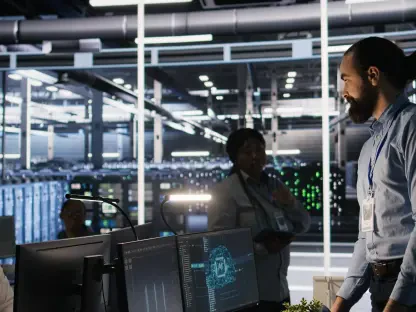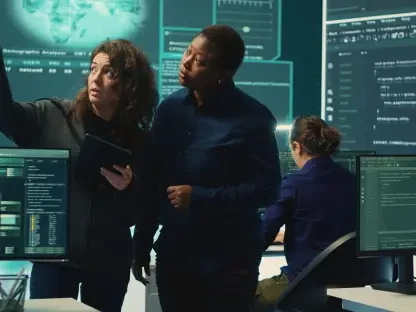For state and local government leaders, technology modernization projects are often seen as monumental undertakings characterized by complexity and uncertainty. Today, these projects involve more emerging technology than ever, and its importance continues to grow as the public expects a high level of service delivery from government agencies. According to the National Association of State Chief Information Officers’ (NASCIO) 2024 Tech Forecast, nearly half (49%) of state CIOs said they will need to increase the number of IT employees to keep pace. This trend highlights the growing demand for digital services, customer experience improvements, and artificial intelligence (AI) in modernization projects. However, successful modernization requires more than just implementing new technology—it necessitates a human-centered design approach to achieve meaningful and long-lasting change.
Pay Attention and Work Together
Effective communication and teamwork are crucial for the success of any modernization project. Stakeholders at every level of the organization, from end-users to senior leaders, should be engaged to ensure a unified understanding of their challenges and priorities. This should include open conversations about the specific goals, overall priorities, and motivating factors behind the project. By fostering a culture of open dialogue and collaboration, leaders can harness the collective wisdom of their teams—ensuring that modernization efforts address real-world challenges while driving meaningful change. Engaging stakeholders early and often not only helps build trust but also mitigates resistance to change, fostering a sense of ownership and commitment to the project’s success.
Moreover, open dialogue brings diverse perspectives into the conversation, which is essential for identifying potential pitfalls and innovative solutions. Imagine a scenario where end-users, who interact with systems daily, provide critical insights that senior leaders might overlook. Their input can be invaluable for designing solutions that are not only technologically advanced but also user-friendly and effective. In this way, collaboration becomes a powerful tool for ensuring that modernization projects are both comprehensive and practical. By emphasizing the importance of listening and working together, government agencies can create an environment conducive to successful modernization.
Close the Program-Technology Gap
Modernization is fundamentally about improving the lives of individuals and communities. There must be effective communication between the technology and program teams to fully understand the benefits from each perspective. Throughout the process, everyone involved should keep the needs of the agency and the people it serves at the forefront. This human-centered approach ensures that technology serves as a tool for empowering and enhancing programs, rather than an end in itself. By facilitating communication between these teams, leaders can bridge the gap between technological possibilities and programmatic needs.
For instance, technology teams might focus on the capabilities and limitations of new systems, while program teams prioritize the outcomes and efficiency improvements these systems can deliver. By fostering mutual understanding and collaboration, both teams can work together to create solutions that meet the agency’s objectives and serve the community effectively. This approach not only aligns technological upgrades with program goals but also helps in identifying how technology can solve specific problems and enhance service delivery. By humanizing the modernization process, government leaders ensure that the technology implemented truly serves the needs of the people and programs it supports.
Adopt a Program-Focused Perspective
Modernization projects should be driven by the needs and priorities of the program, not solely by technology. It is imperative to cultivate a program-focused mindset, ensuring that every decision aligns with the overarching goals of optimizing service delivery and customer satisfaction. One of the more significant hurdles to overcome is getting people to understand that the program doesn’t exist to support IT; rather, IT exists to support the program. This shift in perspective is crucial for aligning modernization efforts with the actual needs of the community and ensuring that technology serves its intended purpose.
Leaders should continually evaluate modernization decisions through the lens of program improvement. This means assessing whether new systems and technologies will enhance the agency’s ability to deliver services efficiently and effectively. For example, before implementing a new customer relationship management (CRM) system, leaders should consider how it will improve the interactions between the agency and its constituents. Will it make processes faster and more transparent? Will it reduce the workload for frontline staff and allow them to focus on higher-value tasks? By keeping these questions in mind, government agencies can ensure that their modernization efforts are grounded in the real needs and priorities of their programs.
To illustrate how modernization can align with program needs, consider the state of Wisconsin’s ongoing project to modernize its child support system. In late 2020, Wisconsin began working with industry partners on planning, business process reengineering, and strategy design to replace its legacy mainframe system with a cloud-based, state-of-the-art system. From a technology perspective, this work includes replacing manual processes with automated workflows, a self-service portal, and enhanced communication tools. This project exemplifies how a program-centric approach can lead to meaningful improvements in service delivery and customer satisfaction. By focusing on reimagining the entire child support program, Wisconsin aims to better serve its families and fulfill its vision.
Conclusion
Navigating government technology projects requires more than just technical know-how—it demands strategic foresight, clear communication, and a thorough grasp of program and project goals. Government leaders must adopt these principles and learn from industry best practices to confidently embark on modernization projects. The key to successful modernization lies in collaboration, bridging the gap between programs and technology, and adopting a program-centric viewpoint.
When government agencies focus on these areas, they can ensure their modernization efforts lead to better service delivery, higher customer satisfaction, and meaningful, lasting change for the communities they serve. It’s essential to create a cohesive strategy that aligns technological advancements with program objectives. Effective communication within teams and with stakeholders helps in understanding and addressing the unique challenges and opportunities that arise.
Moreover, by fostering a culture of collaboration and continuous improvement, government leaders can drive innovation and efficiency. This holistic approach will not only bridge the existing gaps but also install a framework for future development. Ultimately, success in government technology projects is achieved by blending technical skills with strategic management, ensuring that modernization initiatives meet their intended goals and benefit the public.









